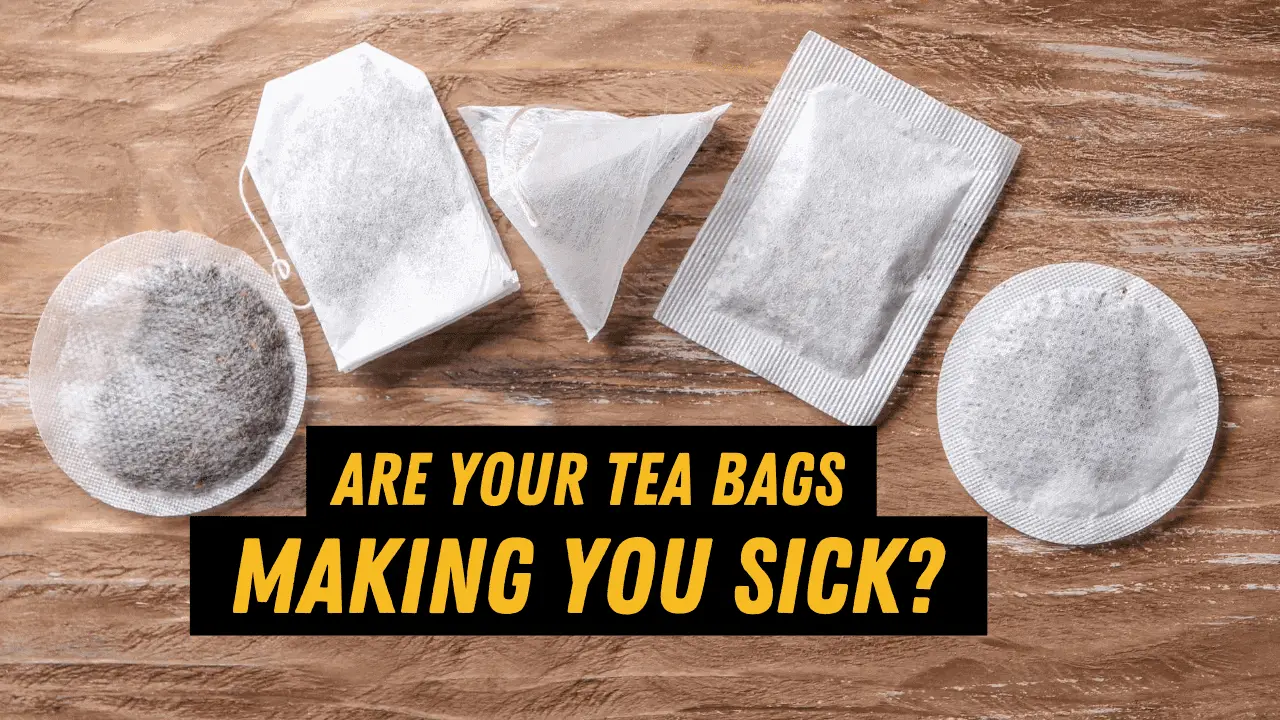Teabags are super convenient – these little sachets are easy to use and ready to brew. However, if you are a regular tea drinker like myself, you’ve probably wondered if your tea bags are safe or if could they contain something other than tea leaves.
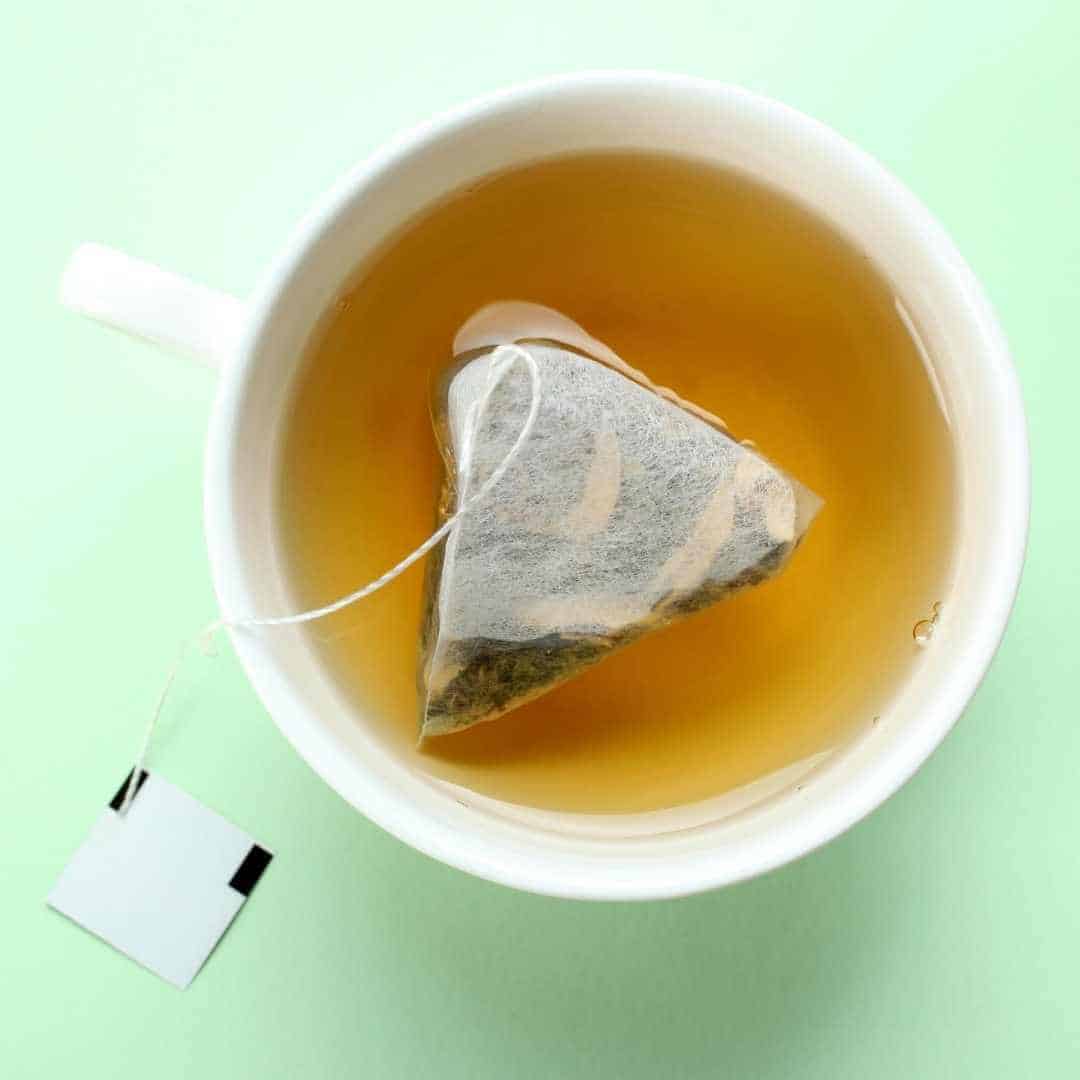
There is just something so soothing and relaxing about a nice cup of steaming hot tea. Whether you’re fighting a bug or just enjoy the stimulating mood-elevating effects to help keep your nerves at bay, it’s no secret that tea has a wide range of potential benefits.
Many people have made more of a concerted effort to consider the health impact of what they consume. Fortunately, we live in an era where information is rather abundant. I’ve recently gone on a little knowledge quest to assess tea bags’ safety, and I’m anxious to share with you what I’ve discovered.
A Brief History Of The Tea Bag
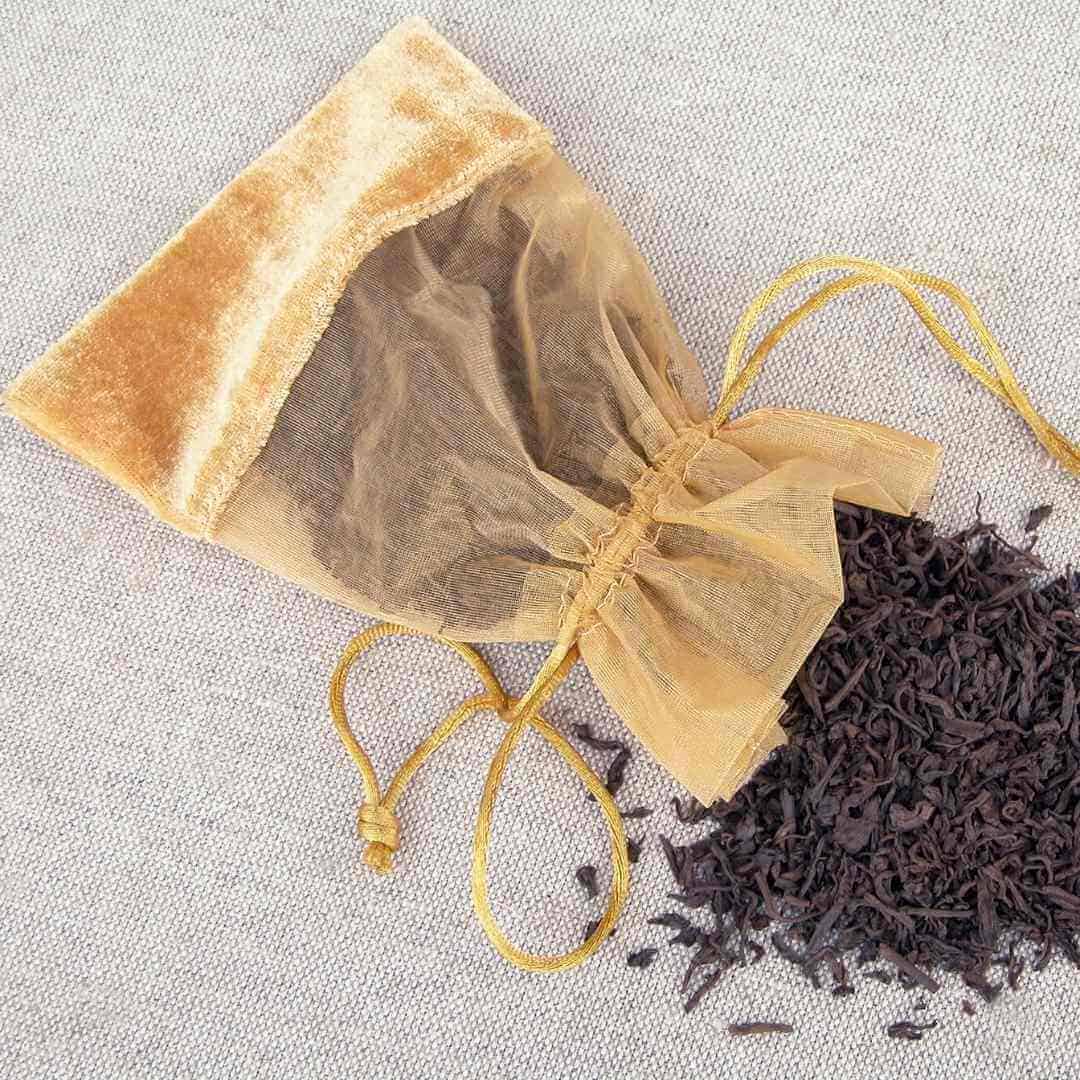
Tea became a popular import in Britain in the 17th century. By the 18th century, black tea had surpassed the popularity of green tea. Western drinkers of the hot beverage began taking note of the fact that their drink had a more enjoyable flavor when they removed the leaves from the hot water after a few minutes of steeping.
Equipped with this newfound insight, 19th-century tea drinkers turned to devices like tea eggs and infusers to efficiently remove the leaves from the water after the intended brewing period had elapsed.
The disposable tea bag as we know it today wouldn’t be invented until the early 20th century. It turns out that its invention was the product of a happy little accident that Bob Ross would have been especially proud of.
Thomas Sullivan, a New York City tea merchant, thought it would be in his business best interest to send his customers samples of his wares. He delivered small silken, hand-sewn bags of his fragrant leaves to his clients. They made the assumption that these small porous bags were intended to be used in much the same way as a metal infuser.
Realizing that he could turn a profit on this newfound accidental invention, he started intentionally making tea bags for sale. Soon enough, he swapped out the silk with gauze, which helped infuse the tea more effectively.
By the 1920s, tea bags would make the leap from a specialty craft item to mass production when the company Teekanne started producing the first commercially available infusion bags.
Tea Bags Are Considered Safe, But…
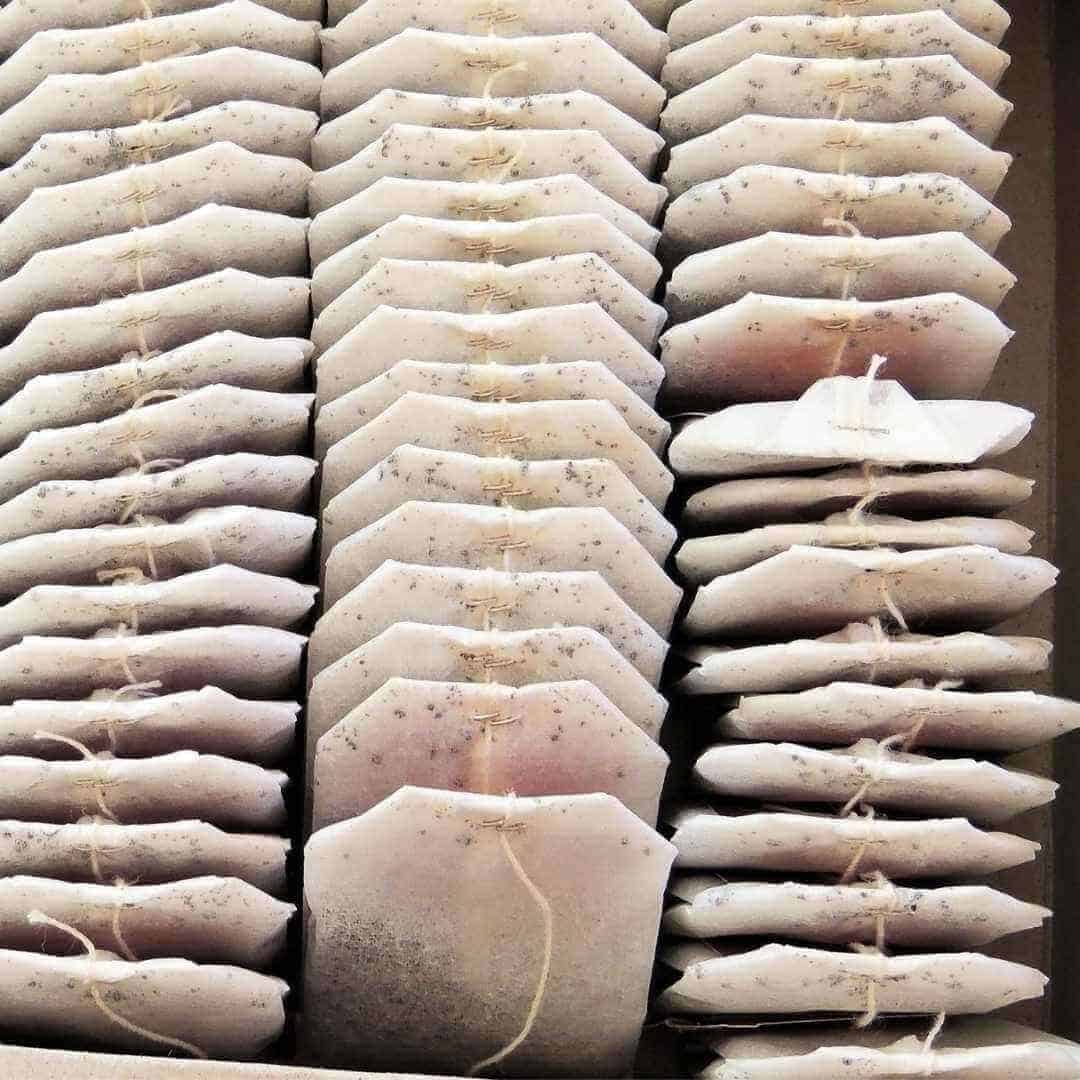
Teabags are made from food-grade materials and are generally considered safe. However, tea bags made of plastic could leach potentially harmful chemicals as well as nanoplastic and microplastic particles into your drink when steeped in hot water.
Even though there are only low levels of these chemicals in tea bags, if a person drinks 4-5 cups every day, these chemicals may add up and bioaccumulate in your body. [1]
So, What Are Tea Bags Made From?
Your average rectangular tea bag is made from filter paper, which itself is composed of a blend of wood and organic fibers from the Abaca hemp plant – a cousin of the banana. This material is semi-permeable and does a great job of allowing the extractions from tea leaves or herbs to transfer to the hot water while keeping all the solid bits securely in the bag.
This is the same stuff that coffee filters are commonly made of, in case you were wondering.
However, many manufacturers (still) use potentially toxic materials like:
- Food-grade plastics
- Nylon
- Polymer mesh
- Polyethylene terephthalate (PET)
- Dyes
- Adhesive
- Glue
- Chemically produced wood pulp
- Cellulose fiber
- Oil-based sealants
- Chlorine bleach
Even tea bags made of paper quite often contain plastic, which could be up to 30% polypropylene. [2], [3]
Microplastics And Nanoplastics
Many tea bags are sealed using a plastic-based adhesive such as polypropylene. As I already touched on, a great variety of tea bags are also made of nylon or PET. When these materials are submerged into the near-boiling water at a typical brewing temperature, they release what are called microplastics and nanoplastics.
When these plastics leach into our drinks, it has enormous potential to put our health at risk. Also, these plastics wind up in our water system and end up polluting our rivers and oceans. So not only, do these potentially toxic materials put us in harm’s way, but we may also be harming our planet’s aquatic life.
As a gardener, I take note of the materials used for my tea bags because I try to compost all of my organic byproducts. These plastics commonly used in tea bags are not biodegradable and thus should be avoided if you intend to throw them in your compost pile.
As consumers are becoming more health-conscious, however, plastic-free and biodegradable materials are increasing in demand. This particular advance is especially exciting for me, being the kind of person who is pretty put off by knowingly consuming toxins.
Which Tea Bags Do Not Contain Plastic?
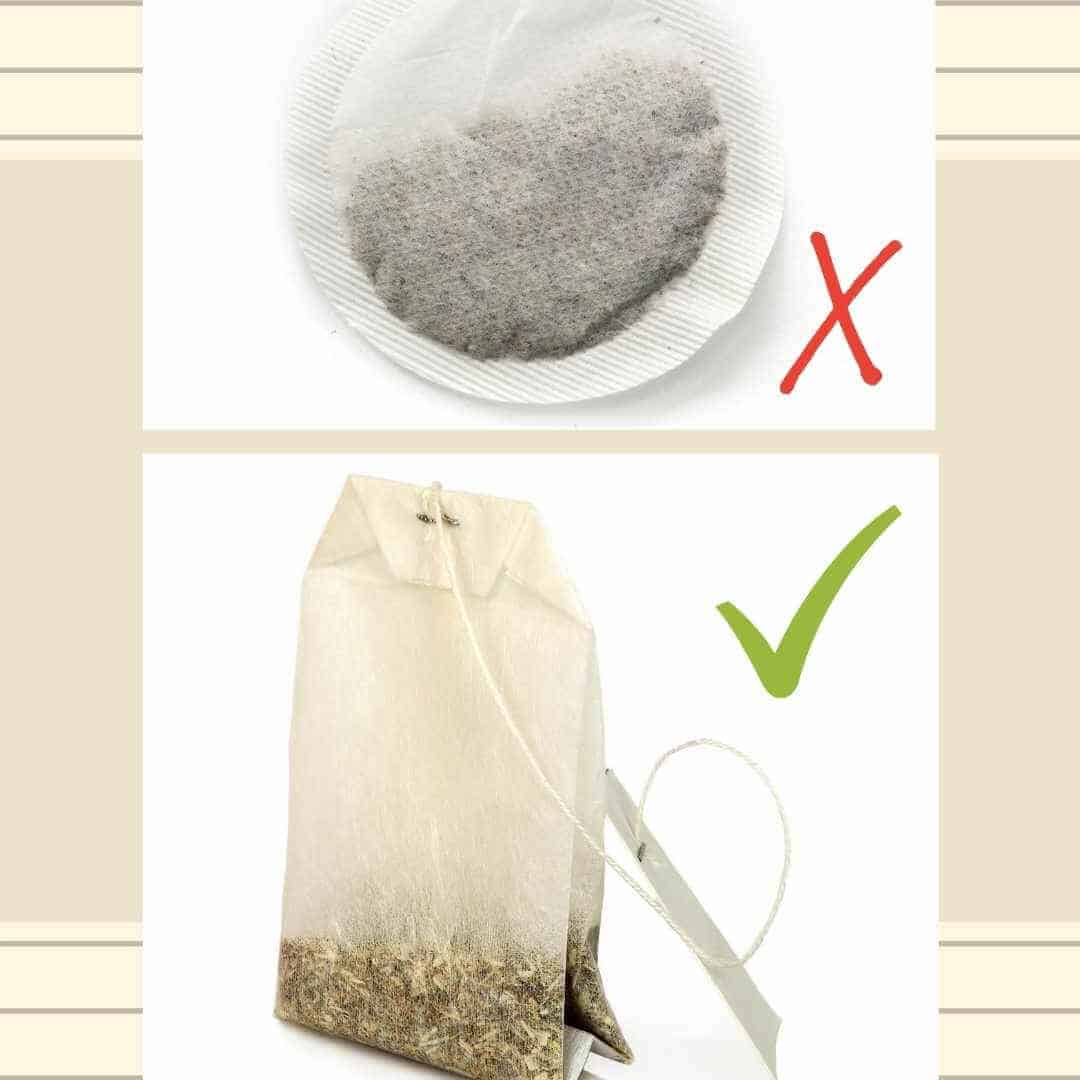
To choose safe, plastic-free, and non-toxic tea bags, look for materials that are organic, completely biodegradable, natural, plastic-free, or made with plant-based materials, such as corn, cornstarch, potato, and hemp fiber.
Pouces made from cotton or soilon are also a good choice.
Unfortunately, quite often, there are NO materials listed on the product label. If that is the case, there are still a few things by which you can determine if the product is safe or not.
If the teabag is pressed together, then most likely, it will contain plastic. If it is on the cotton string and folded together instead of pressed, it is more likely to be plastic-free.
Also, tea bags that are brown and appear rather unappealing are actually a better choice than the perfectly white ones. The reason for that I will cover that in the next paragraph.
Bleached Vs. Unbleached
Most white tea bags that you might come across have been bleached with chlorine. Chlorine not only poses serious health risks, but it is also problematic for the environment. I try to choose tea bags that are either completely unbleached or are bleached in an alternative manner.
Some specialty tea bags are made from paper or material that has been oxygen bleached. This is a process that uses soda ash and hydrogen peroxide to cleanly whiten a material as opposed to chlorine which leaves behind a chemical residue.
Chlorinated tea bags commonly contain chemicals such as dioxin and epichlorohydrin – both of which can put you at increased risk for adverse effects. [4]
Still yet, many companies choose to use bleached filter paper. For the life of me, I don’t know why a teabag has to be perfectly white in the first place. Unbleached tea bags have no functional difference from bleached bags.
Teabags have become such a matter of convenience, but the best way to make sure that you don’t get anything unwanted in your cup is to use loose-leaf tea. Brewing loose-leaf tea is easier than you think. Below is how to do it.
The Easiest Way To Brew Loose Leaf Tea
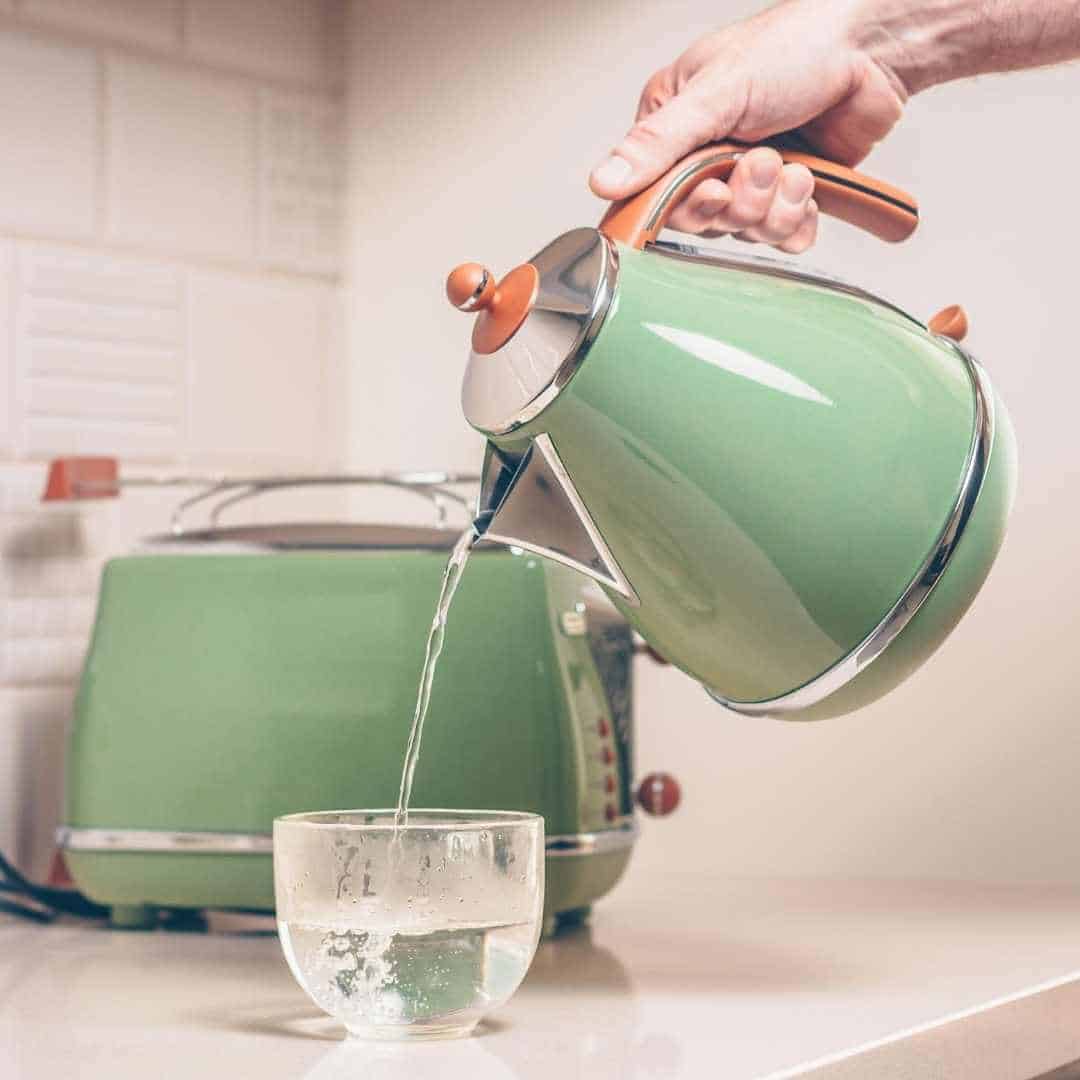
I think I’ve pretty much established at this point that I take tea very seriously. As such, I’ve tried to educate myself about the alternative brewing methods to produce one of my favorite hot beverages.
Granted, there is no one ‘right way’ to make a cup of tea. You can use a strainer, teapot, French press, or just put tea leaves loose in the cup but here’s what I’ve learned over the years to be the best way to brew a cup for my preferences, and that is using a simple tea infuser.
A tea infuser has many benefits. It keeps loose leaves from floating in your cup as you probably do not want to be chewing on tea leaves while you drink! The infuser also lets you control the steeping time and keeps your tea from getting too strong or bitter.
Instructions
- Boil Water – Keep in mind that different types of tea may require a different water temperature for optimal results (check below). Use filtered water if at all possible.
- Warm the teapot or cup – You can accomplish this task by swirling hot water around the vessel until it feels warm to the touch before pouring it out.
- Add the desired amount of loose-leaf tea to your infuser, about 1-3 tsp.
- Pour the hot water into a cup and then add the infuser – Avoid pouring boiling water onto the infuser directly. This can burn or scald the tea leaves resulting in an inferior flavor.
- Cover the vessel and allow it to steep – You typically don’t want to steep for longer than 5 minutes (check the general brewing times below).
- Remove the infuser and enjoy.
Suppose you have never enjoyed steeping full-leaf loose teas. In that case, I encourage you to get ahold of a simple infuser and see what makes it such a unique treat.
Brewing Water Temperature And Time Guide
Here are some general measurements, temperature, and brewing time guidelines for 6-8 ounces (170-227ml) cup or teapot.
- Black tea: 1-2 tsp, 210°F (98°C), 2-3 minutes
- White tea: 2-3 tsp, 180°F (82°C), 4-6 minute
- Green tea: 1-2 tsp, 160°F (71°C), 2-3 minutes
- Oolong: 1-2 tsp, 190°F (87°C), 5-8 minutes
- Rooibos tea 1-2 tsp, 210°F (98°C), 5-8 minutes
- Herbal teas: 1-3 tsp, 210°F (98°C), 4-10+ minutes
These figures above are not an exact science. You don’t need a thermometer or a sophisticated measuring tool. Just don’t cram the infuser tightly and wait 1-5 minutes once the water has come to a boil to get an approximate temperature. If the tea is too strong, use less next time or let it steep a few minutes less. If too weak, then do the opposite.
Most full-leaf loose teas are great for multiple infusions, so you can enjoy them more than once. When reused or re-steeped, you might want to increase the time in the water by 2-3 minutes.
Frequently Asked Questions
This is by no means a comprehensive and exhaustive overview of the ins and outs of teabags. Many books could be written on the subject – and they have. I would like to clear up some of the most commonly queried questions that tea drinkers pose. However, to give you a better understanding of the best way to consume one of my favorite beverages.
Can I Boil A Tea Bag?
When you boil tea, it releases chemicals called tannins. Small amounts of this substance can actually be good for you. Tannins are responsible for providing the antioxidant effect that tea is known for in addition to being a potent anti-microbial. That being said, too much tannin will ruin your cup of tea.
Not only does excess tannin give your tea a bitter or sour flavor, but it can also potentially cause you some troubling gastrointestinal distress.
Also, depending on the material in the teabag, boiling it could leach some unwanted nasties into your drink.
Always add the tea bag after you boil your water and take it off the heat. Never boil the bag itself unless you’re trying to wind up in the bathroom. Trust me on this one. I’ve learned from my mistakes.
Read Also: Which Foods Contain The Most Microplastics?
Can I Microwave Tea Bags?
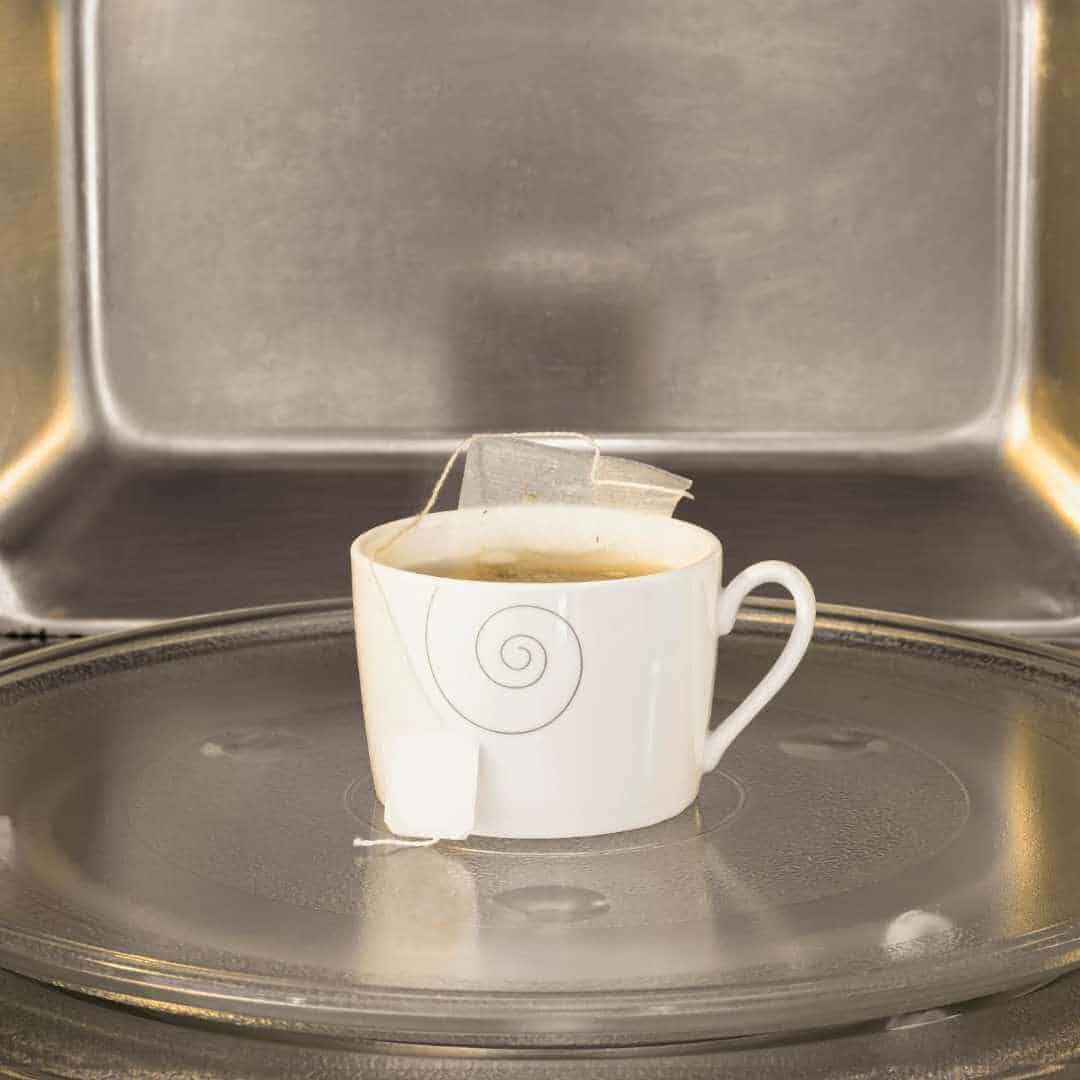
There is no easy answer to this question. Simply put, yes, you can. This controversial brewing method won’t hurt you, but it certainly won’t produce the tastiest results. I can attest to the fact that microwaving tea can go horribly wrong, resulting in a bitter, disgusting mess if done improperly.
Suppose you insist on using a microwave to brew tea. In that case, I recommend first bringing a cup of water to boil in a microwave-safe mug before adding a tea bag and allowing it to steep for 1-3 minutes.
Alternatively, you can place a teabag in a mug of water and allow it to pre-steep for 30 seconds before microwaving it for 1 minute. If you are going to microwave the tea bag itself, it’s best to avoid black or flavored teas. Green or white teas are the best varieties to use if you’re heart is set on this taboo brewing method.
Do yourself a favor by not telling any tea connoisseurs about your microwaving antics. They will surely chew you out and tell you how you are doing it all wrong. But whatever floats your boat – or tea bag.
Can I Reuse A Tea Bag?
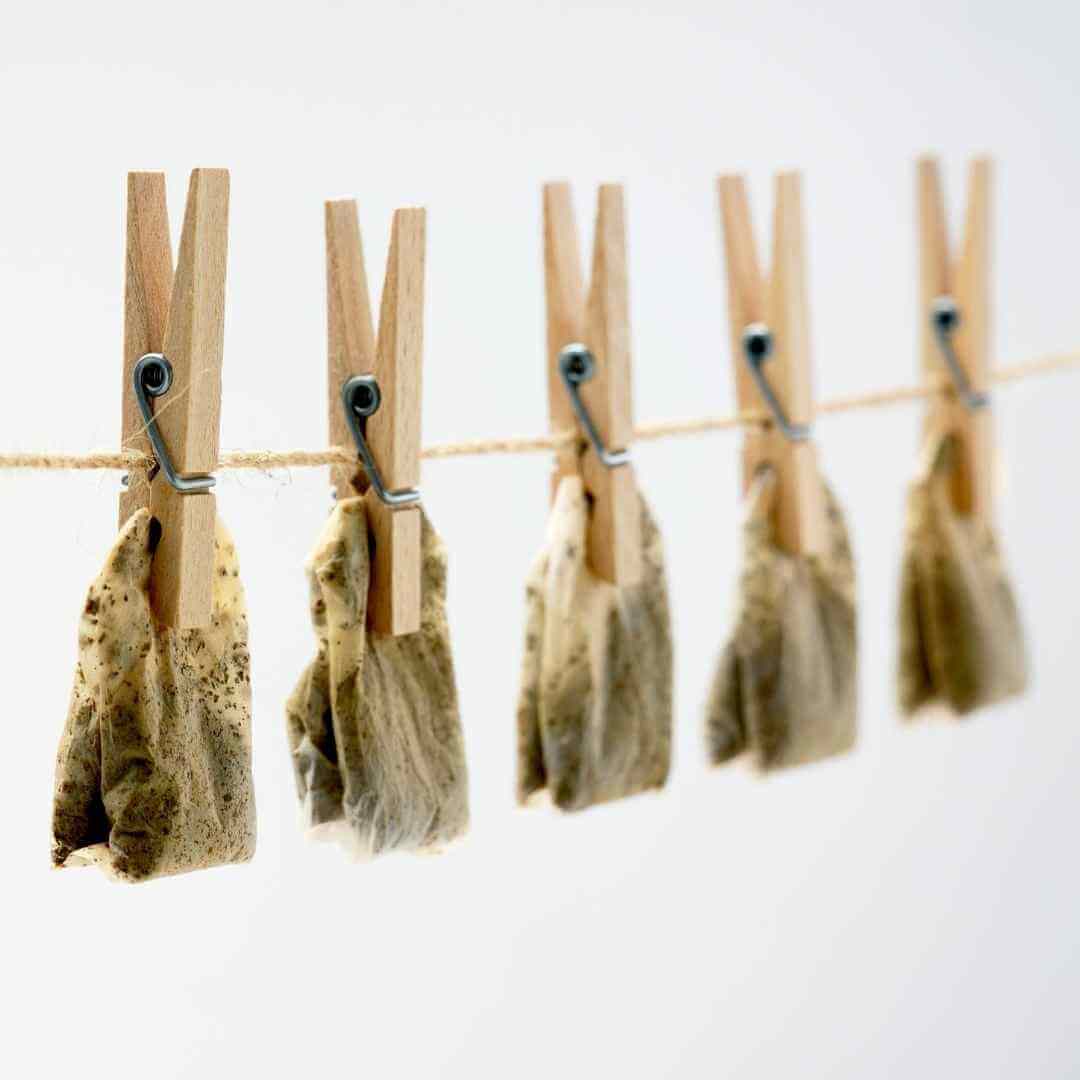
You can reuse a tea bag one or two times. After that, it is unlikely to provide too much color or flavor and should be discarded. Make sure that if you reuse a tea bag, you do so quickly. If it sits out for more than 2 hours at room temperature, it may develop harmful bacteria that could give you trouble.
On that note, you shouldn’t consume a tea that has been left out overnight. Food poisoning isn’t a joke, Some varieties of tea call for a longer brewing process, but if you are working with regular tea bags, you should be making an effort to consume it pretty quickly after brewing.
Is Loose Leaf Tea Better?
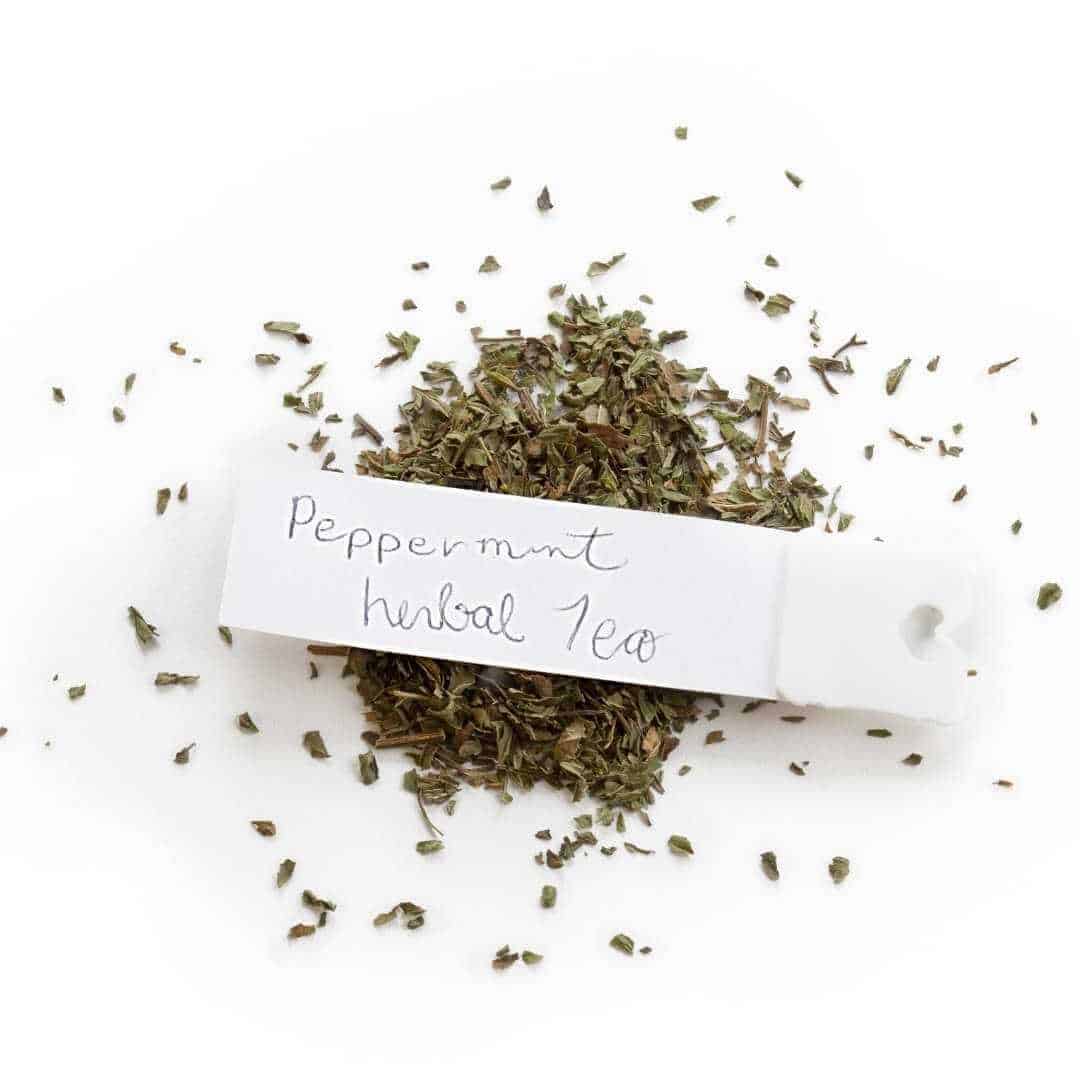
While this question obviously brings up a matter of opinion, tea aficionados will point out that tea bags are made from broken tea leaves and fannings. In contrast, a loose-leaf tea is typically the whole leaf.
Teabags release more tannins than whole-leaf teas, leaving many serious tea drinkers to prefer the flavor of loose leaves.
Also, if you are concerned about consuming plastic and the safety of tea bags, then using loose whole-leaf is definitely the best option for you.
Are Tea Bags Vegan?
Most teabags don’t contain any animal by-products. Some varieties do contain small amounts of honey to enhance their flavor. Most vegans do not consume honey. If you are vegan, it’s always best to thoroughly read the ingredients list on anything you consume.
Parting Words
As an avid tea consumer, the simple infuser is my go-to means of preparing my favorite beverage. Sure, you can use tea bags as they are very convenient, but it’s always good to consider the materials that make them. After all, not all tea bags are created equal.
If you aren’t into consuming bleach and plastics, it’s best to look for products that use more natural materials in their construction.
It truly is a golden age for consumerism – despite its many failings – as there are so many choices available on the market. Pick tea bags that align with your standards and always show the tea some respect by brewing it using the proper brewing methods.
Read Also: Matcha Vs. Green Tea Extract – Which One Is Better For You?
